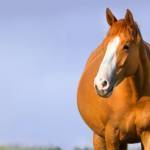Mare Age Biggest Predictor of Foaling Success

The last evaluation of reproductive performance in South African Thoroughbreds was published over two decades ago in 1999, reporting a live foaling rate of 62%. To update their data, South African researchers reviewed demographics (e.g., age) and foaling rates for mares that were barren or maiden in 2018 and 2019. These are mares that were presented to Southern Africa’s Stud Health Scheme (SHS) for routine annual testing of maiden and barren mares for bacterial venereal diseases before breeding.
In total, 990 mares were tested in 2018 and an additional 1,130 mares were tested in 2019. Most maiden mares were young, five years of age or younger. In contrast, the barren mares were older, with 79% between six and 15 years of age. The most common reason for being classified as barren was “failure to conceive.”
Foaling rates were 68.1% and 63% in 2018 and 2019, respectively, for both maiden and barren mares, similar to what was previously reported in 1999.
Key findings of the study related primarily to mare age rather than number of previous live foals. Specifically, foaling rates were highest in mares 10 years of age or less (68.9-71.9%). Those rates dropped markedly as mare ages increased, with foaling rates in mares 16 years of age or older only 54.7% and 45.7% for those tested by the SHS in 2018 and 2019, respectively.
“Mares 10 years of age or younger were almost three times more likely to produce a live foal than mares 16 years or older,” said Kathleen Crandell, Ph.D., of Kentucky Equine Research. “Advancing age is a well-known predictor of reproductive performance, and studies show that advancing age negatively influences the condition of the endometrium, the lining of the uterus. Good endometrial health is crucial for conception.”
While we can’t “treat” age, we can take other steps to help support an aging mare’s reproductive success.
“Supplementing mares with the long-chain polyunsaturated omega-3 fatty acids DHA and EPA has reproductive benefits such as improved fertility, particularly in older mares,” relayed Crandell. A palatable, direct source of DHA and EPA is EO-3, a potent marine-derived oil.
*Scholtz, M., A.J. Guthrie, G.T. Fosgate, and M.L. Schulman. 2022. Predictors of foaling outcomes in barren and maiden Thoroughbred mares in South Africa. Journal of the South African Veterinary Association 93(2).








